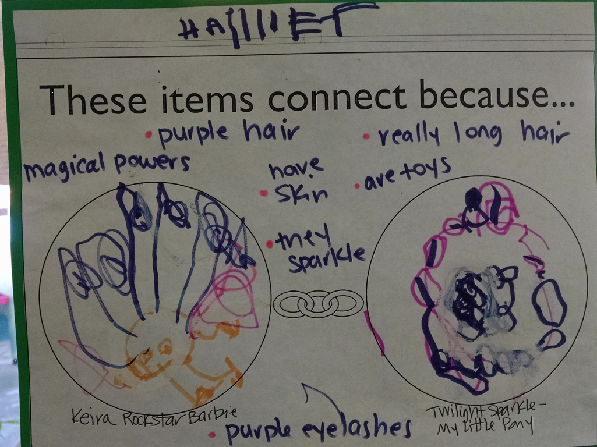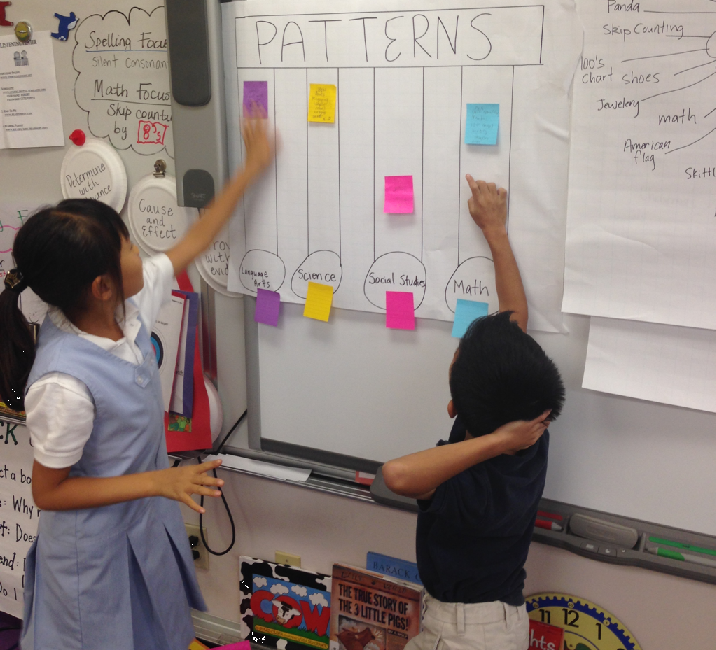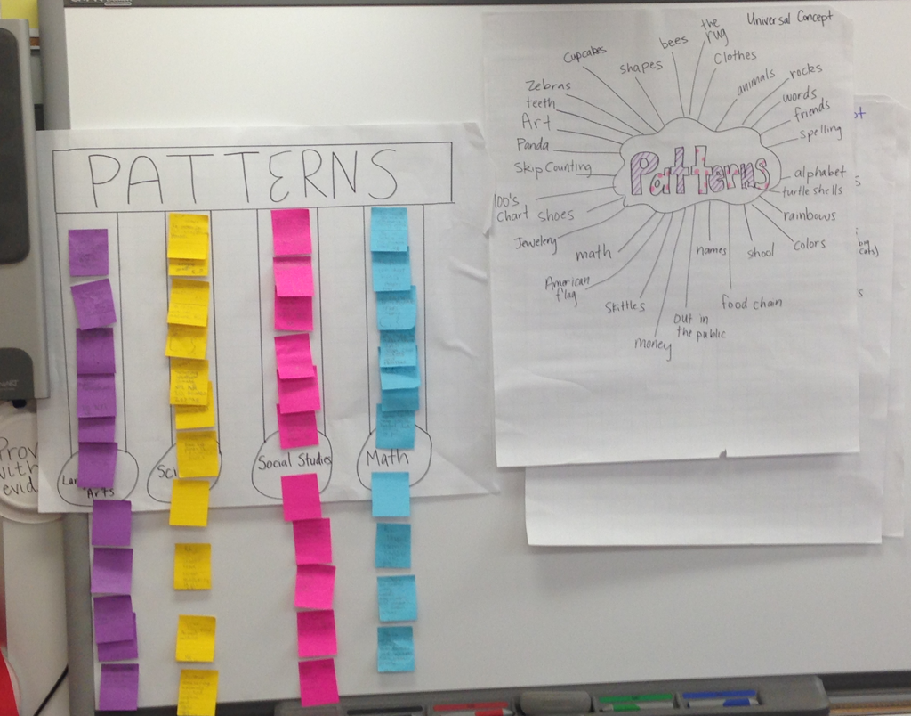click here for the PDF version of this article
 Human beings have a natural inclination to try and make connections. Uncovering the link, the bond, or the relationship between objects and ideas helps us generate meaning from our world. Engage in a conversation with a young child.
Human beings have a natural inclination to try and make connections. Uncovering the link, the bond, or the relationship between objects and ideas helps us generate meaning from our world. Engage in a conversation with a young child.
Questions such as “How are these items related?” and “What makes this item different from that item?” are evidence of our need to develop an understanding of our surroundings by connecting what is known/familiar with new pieces of information. Although the inclination to “connect” is a natural characteristic of being human, the ability to make strategic and purposeful interdisciplinary connections is a skill that can be taught, learned, and fostered in our classrooms.
The ability to and importance of making connections is highlighted in the GATE standards, the 21st Century Skills, and the Common Core State Standards. Gifted learners have an unusual capacity for processing information that allows them to generate connections quickly and with a great degree of sophistication. According to Clark (2008), gifted individual have a heightened capacity for uncovering complex relationships and integrating ideas across the disciplines. Critical thinking, creative thinking, and problem solving skills and strategies form the basis for the GATE standards and deliberately target students’ abilities to connect one concept or idea with another. The generation of a hypothesis in problem-based learning for example requires connecting prior knowledge within and between the disciplines to outside life experiences. Elements of the GATE standards such as Universal Concepts (power, conflict, change, structures, etc.) and the prompts of Depth and Complexity (patterns, impact, trends, ethics, etc.) functions as key words that act as points of connectivity within, between, and across the disciplines. These elements can be integrated into the construction of learning experiences as opportunities for students to explicitly practice the skill of generating interdisciplinary connections.
The following benchmarks in both the 21st Century Skills and the Common Core State Standards directly and indirectly require the use of the skill of generating interdisciplinary connections.
| 21st Century Skills |
|
|
|
|
| Common Core State Standards |
|
|
|
|
|
|
In order to meet the needs of our students as well as the benchmarks outlined in the standards, we must create learning experiences that demonstrate, reinforce, and provide opportunities for students to practice the skill of interdisciplinary connections. Learning experiences that promote the development of interdisciplinary connections share several common characteristics. Regardless of the context, grade level, or subject matter, these classroom environments:
- Utilize academic language and define the meaning of key words within and between the disciplines
- Engage students in open-ended questioning and thinking activities
- Encourage students to ask questions for curiosity and clarification
- Build on elaboration skills – extend, add-to, create, modify
- Value student autonomy and independent thinking
- Utilize analogies and metaphors
- Require students to explain, validate, justify, prove, and substantiate their connections
- Utilize big ideas and universal concepts
Fostering the skill of interdisciplinary connections can occur through a process that (a) explicitly defines the skill for students, (b) organizes their thinking around a universal concept, big idea, or overarching theme, and (c) provides time for students to generate and share their connections. It is important to provide a concrete definition for the term “interdisciplinary connections” so that students have a foundation on which to construct their knowledge. In this stage of the process, discussions can be conducted regarding the relevancy of interdisciplinary connections to the clarification of misconceptions, the development of previously learned ideas, the germination of original thought. Once teachers have defined the skill, they can then begin to models its use in various contexts and applications. Charts and visual organizers can be integrated into class discussions to serve as concrete representations of the cognitive processes utilized when making interdisciplinary connections. These charts or graphics function as repositories for the information and ideas generated by the students during their research and core content lessons. Students are provided with time to work in small groups, partners, or individually to make connections between what they are studying in one discipline with others. Students are encouraged to connect what they are learning in school with real-world issues and current events. The following pictures evidence various stages of the process as teachers work to integrate the skill of interdisciplinary connections into their classroom.




Anselm Keifer, a German painter, sculptor, and winner of the Wolfe prize in art eloquently defines the purpose behind generating interdisciplinary connections. Keifer stated in an interview that his main role as an artist was to draw connections, to “tie the invisible threads between things…to dive into history and to make the connection between the history of mankind, the geological history of the Earth, or the beginning and end of the manifest cosmos.” Like master painters, we as educators can help craft the learning experiences and the conditions that foster the skill of interdisciplinary connections and can intentionally work to provide our students with the tools needed to paint their own masterpieces.
About Jessica Manzone
Jessica Manzone, University of Southern California, has been a Research Assistant on two Department of Education grants to assist in the collection and analysis of data. Dr. Manzone currently teaches at USC in the MAT program. She also has been instrumental in managing the grant resources and disseminating curriculum materials through direct interactions with grant affiliated administrators and teachers. Dr. Manzone has been recognized for her abilities to develop and present in school districts and conferences the principles of differentiated curriculum to educators. Her primary professional responsibilities throughout her career have been in Title I schools working with students of diversity. Dr. Manzone has co-authored three publications related to differentiated curriculum for gifted students. Currently, she is the co-author of a publication targeting the implementation of the Common Core State Standards of mathematical practice.